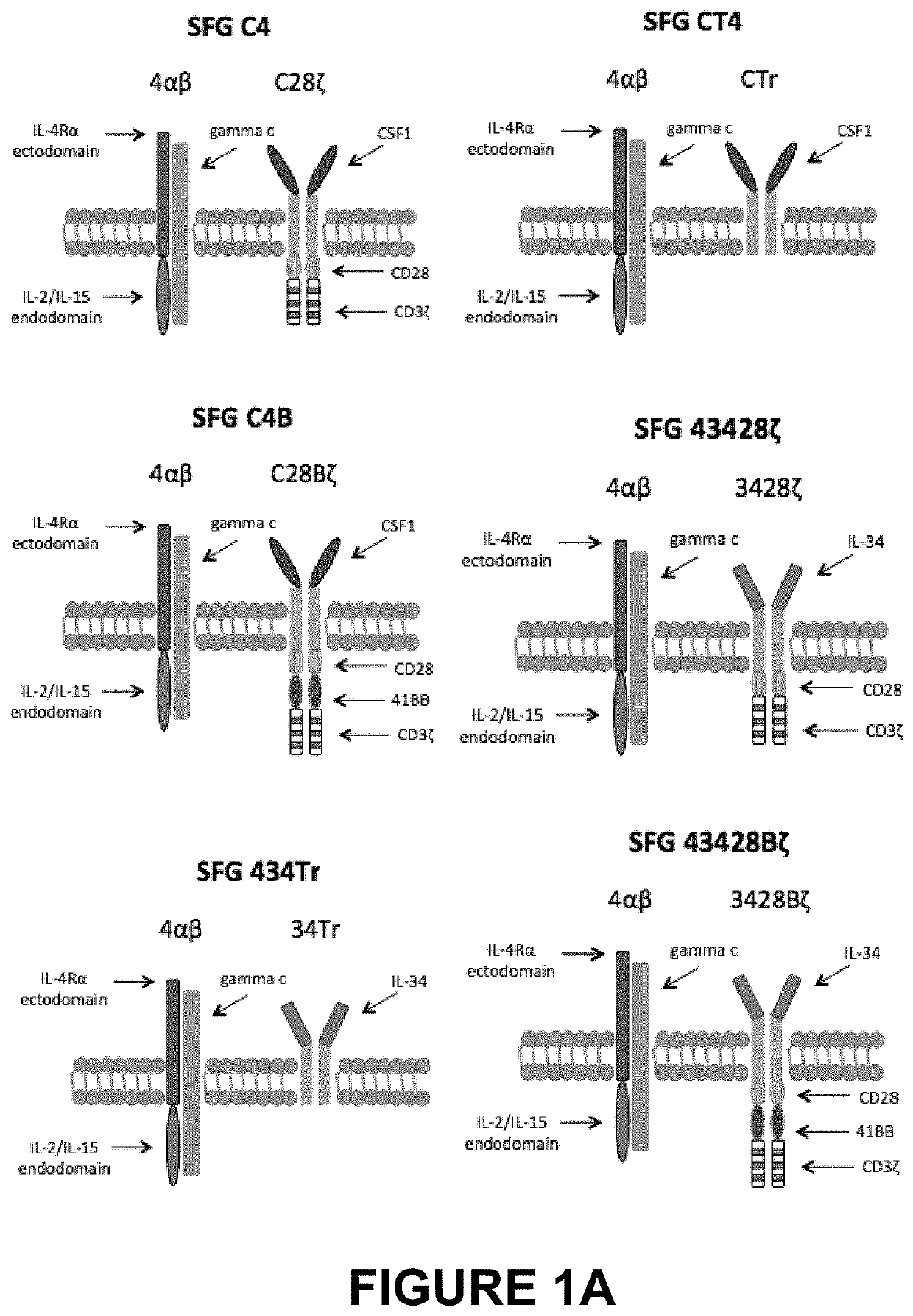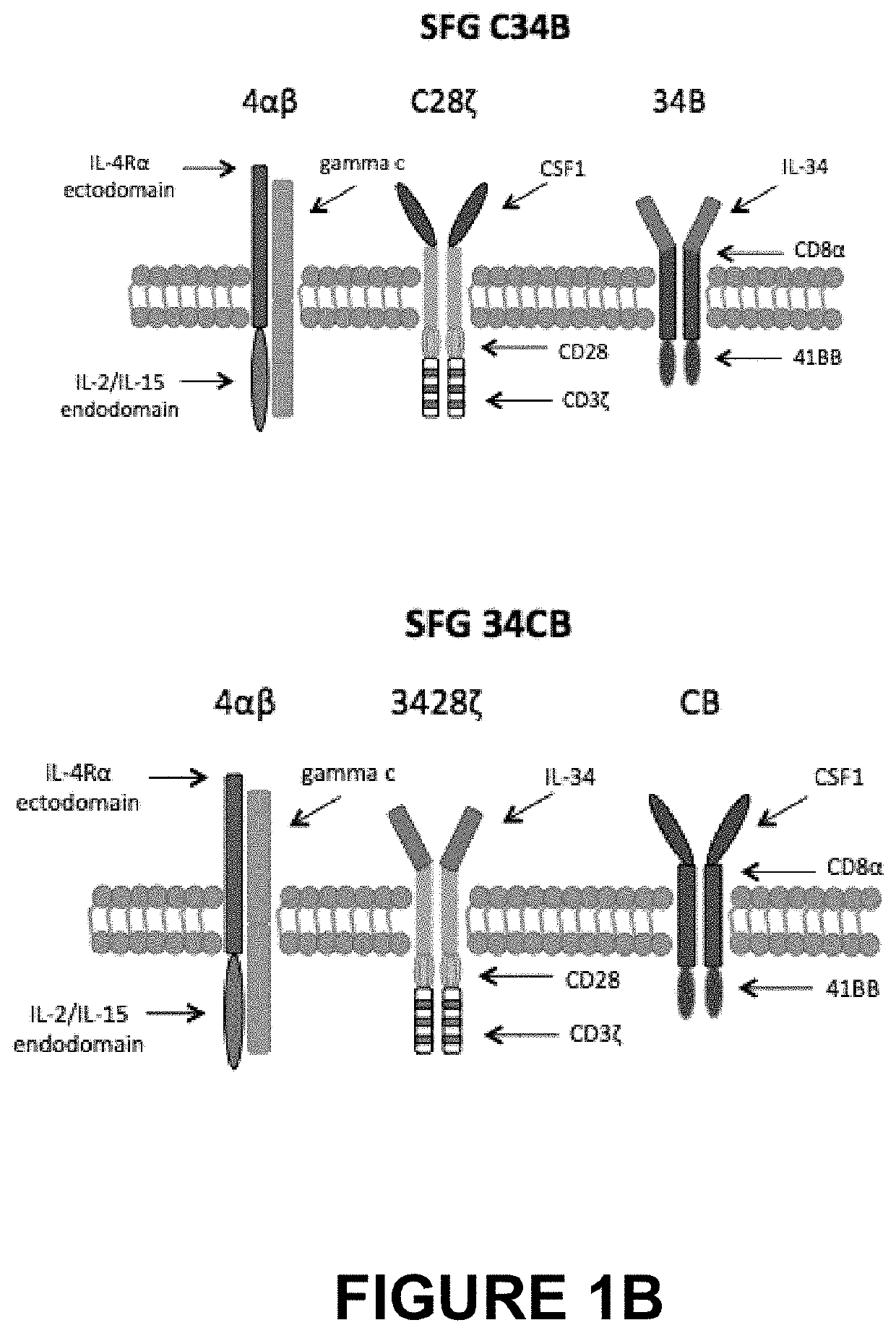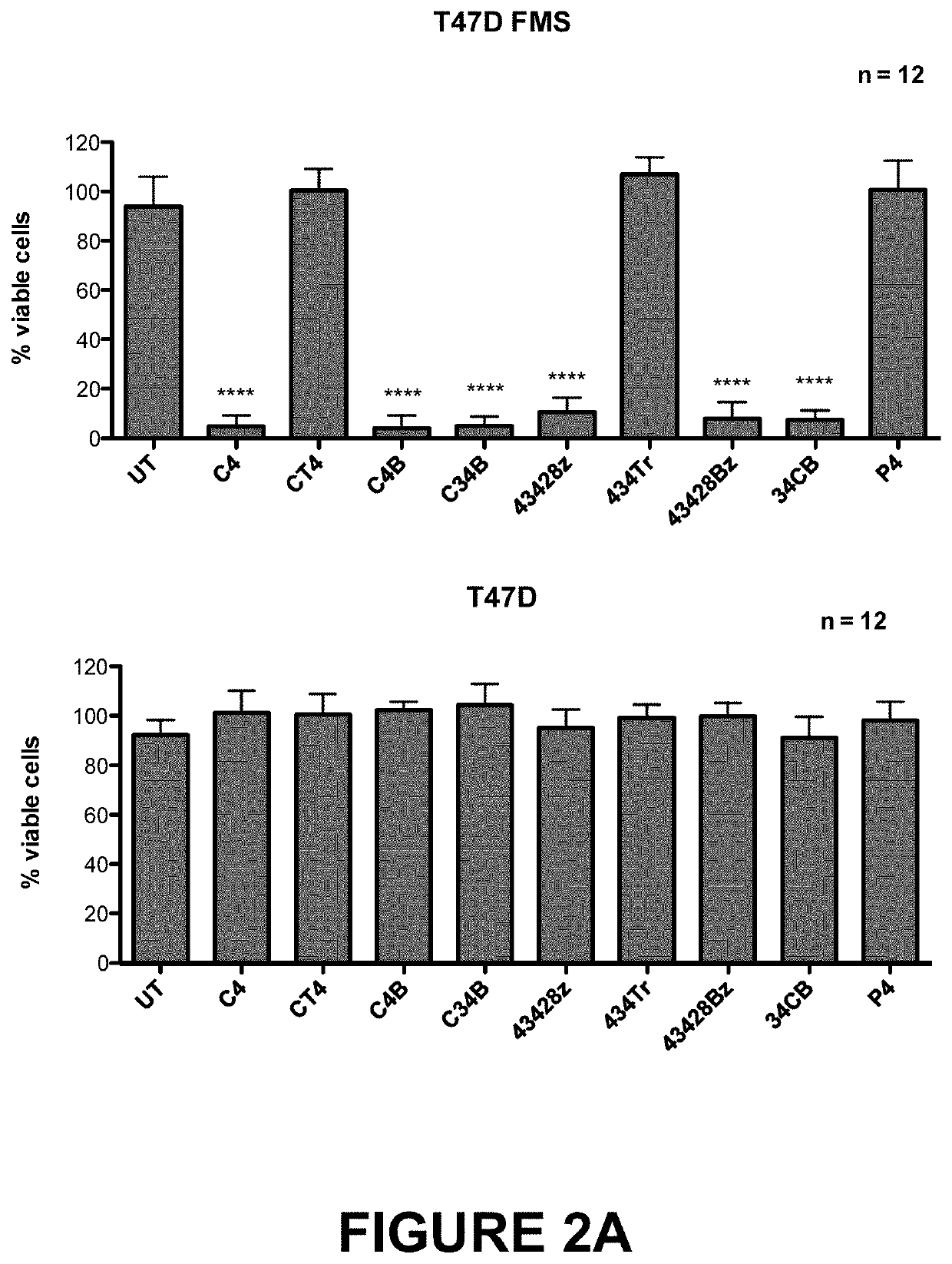Therapeutic agents
a technology cd3z-chain fusion, which is applied in the field of therapeutic agents, can solve the problems of insufficient engagement of cd3z-chain fusion receptor to elicit substantial il-2 secretion and/or proliferation, and the improvement of the third generation of cars has been disappointing and only a marginal improvement, and is undesirable for cancer immunotherapy
- Summary
- Abstract
- Description
- Claims
- Application Information
AI Technical Summary
Benefits of technology
Problems solved by technology
Method used
Image
Examples
example 1
[0092]A panel of CARs targeted against the CSF-1 receptor (encoded by c-FMS), which is over-expressed in Hodgkin's lymphoma, anaplastic large cell lymphoma and some solid tumours such as triple negative breast cancer were prepared and are illustrated schematically in FIG. 1A,B. The panel of CARs included both second and third generation CARs with either of the two natural ligands, CSF-1 or IL-34, as the targeting moieties. Although both CSF-1 and IL-34 bind to CSF-1 receptor, IL-34 binds with much higher affinity (34-fold higher than CSF-1).
[0093]The constructs SFG C28ζ and SFG CTr were cloned in the SFG retroviral vector as NcoI / XhoI fragments, ensuring that their start codons are at the site of the naturally occurring NcoI site, previously occupied by the deleted env gene. Gene expression is achieved from the Moloney murine leukaemia virus (MoMLV) long terminal repeat (LTR), which has promoter activity and virus packaging of the RNA is ensured by the MoMLV ψ packaging signal, whic...
example 2
Analysis of Effects In Vivo
[0108]A panel of CARs used in Example 1 above were tested for anti-tumour activity using a highly aggressive in vivo xenograft model in which the CSF-1 receptor target is expressed at low levels and in which disease is disseminated throughout lymph nodes (FIG. 7A-D). Tumour cells were tagged with firefly luciferase, allowing the non-invasive monitoring of disease burden.
[0109]SCID / Beige mice were randomised into 6 groups (9 animals per group combined over two independent experiments) and were inoculated intravenously (IV) with 2×106 K299 tumour cells, re-suspended in 200 μL PBS. On day 5, the groups were treated with one of the therapeutic regimens indicated below:[0110]C4B group: 20×106 C4B T-cells IV[0111]C34B group: 20×106 C34B T-cells IV[0112]43428Bz: 20×106 43428Bz T-cells IV[0113]34CB group: 20×106 34CB T-cells IV[0114]UT (Untransduced) group: 20×106 untransduced T-cells IV[0115]NT (Non-treated) group: 200 μL PBS IV
[0116]Tumour growth was monitored u...
example 3
Selection of Targeting Moieties to Engineer pCARs that Elicit T-Cell Activation in an αvβ6-Dependent Manner.
[0119]A panel of CARs that target αvβ6 integrin alone or together with the extended ErbB family were prepared and are shown schematically in FIG. 14. The binding element used in this case was A20 peptide (SEQ ID NO 11) derived from the GH-loop of the capsid protein VP1 from Foot and Mouth Disease Virus (serotype 01 BFS) (U.S. Pat. No. 8,927,501). This was placed downstream of a CD124 signal peptide and fused to CD28 and CD3ζ endodomains to form A20-28ζ, a 2nd generation CAR. A control (C20-28ζ) was prepared comprising a similar construct but with a scrambled targeting peptide (named C20) in which the key RGDL motif was replaced with AAAA. A second control comprised A20 fused to a CD28 truncated endodomain (A20-Tr).
[0120]To create the pCAR of the invention (named TIE-41BB / A20-28z), A20-28z was co-expressed with a chimeric co-stimulatory receptor comprising a pan-ErbB targeted p...
PUM
| Property | Measurement | Unit |
|---|---|---|
| binding affinity | aaaaa | aaaaa |
| binding affinities | aaaaa | aaaaa |
| width | aaaaa | aaaaa |
Abstract
Description
Claims
Application Information
 Login to View More
Login to View More - R&D
- Intellectual Property
- Life Sciences
- Materials
- Tech Scout
- Unparalleled Data Quality
- Higher Quality Content
- 60% Fewer Hallucinations
Browse by: Latest US Patents, China's latest patents, Technical Efficacy Thesaurus, Application Domain, Technology Topic, Popular Technical Reports.
© 2025 PatSnap. All rights reserved.Legal|Privacy policy|Modern Slavery Act Transparency Statement|Sitemap|About US| Contact US: help@patsnap.com



